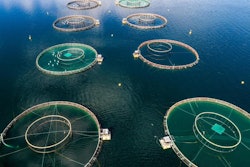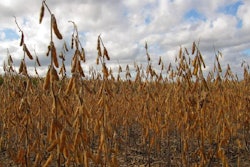
Despite higher sales volume and revenue in 2018 when compared with the previous year, Olam Group’s CEO says the company’s performance was below expectations.
Sales were up by 46 percent in volume year-on-year by more than 32.8 million metric tons for Singapore-based agri-food firm, Olam Group, according to the annual fiscal results published recently. At almost SG$30.5 billion (US$22.5 billion), the value of those sales was 16 percent higher than in 2017.
However, the 2018 performance was below expectations, according to co-founder and group CEO, Sunny Verghese. Market conditions were tougher than expected, he said, especially in the second half of the year.
Following a strong performance in 2017, all reported measures of profitability were lower in the last year. Earnings Before Interest, Tax, Depreciation, and Amortization (EBITDA) dropped almost seven percent at SGD1.236 billion, and Operational Profit After Tax and Minority Interest (PATMI) was almost 20 percent lower year-on-year at SG$347 million.
Results by business segment
The various branches of Olam Group’s portfolio of global businesses experienced different fortunes in 2018.
Higher volumes of grain trading helped the Food Staples and Packaged Foods sub-group to boost revenue to SG$14.5 billion in 2018, which is more than 48 percent above the previous year’s level. However, profitability (as measured by EBITDA) was down by almost 20 percent at SG$289 million. This was attributed to reduced contributions by the dairy, rice, edible oils, and animal feeds businesses.
For Olam’s other businesses, revenue and profitability were down year-on-year for edible nuts and seeds, but good performance by its cocoa interests helped push up profitability in the confectionery and beverages business. There were mixed fortunes for the businesses that comprise Olam’s industrial raw materials, infrastructure and logistics division, while one loss-making part of commodity financial services resulted in negative EBITDA for that group in 2018.
Looking ahead, Olam says its “diversified and well-balanced portfolio provides a resilient platform to navigate the challenges in both the global economy and commodity markets.”
Olam’s grains and feed business is part of the food staples division. According to the company’s own website, it sources, trades and processes grains with a focus on wheat but also increasingly corn, barley, sorghum, rye, flaxseed, chickpeas, and soybean meal.
It produces animal feeds and proteins as well as milling wheat for flour and other foods from facilities in Nigeria, Ghana, Cameroon, and Senegal.
Other Olam business in the grain and feeds division cover poultry feed and day-old chicks, and aquaculture.
Recent Olam Group activity
In 2017, Olam Group announced it would open two poultry feed mills in Nigeria. One of these included a hatchery producing day-old chicks for meat and egg production, and the other produces feed for poultry and fish. In 2018, the firm was considering further investment in the aquafeed sector.
In July of 2018, Ceva Santé Animale and Olam Hatcheries signed a memorandum of understanding to improve poultry health in Nigeria.

















